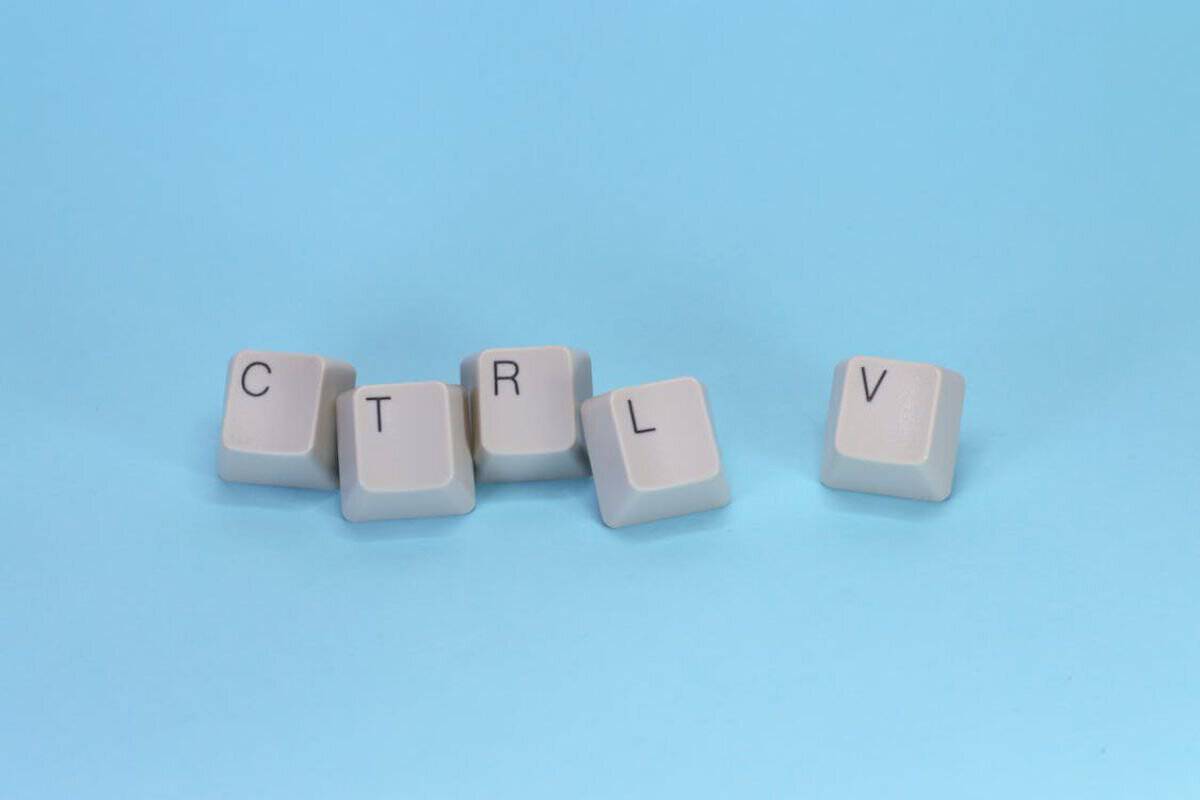Plagiarism and paraphrasing are nothing new. In fact, the first recorded event of it officially being complained in any official capacity was in Rome between 102 and 104 AD by the poet Martial.
Taking someone’s words and either passing them off as your own or swapping out a few words with some sneaky synonyms is something we’ve all been guilty of at some point.
But as it turns out, the ways in which one’s work can be copied and reproduced elsewhere aren’t as black and white as just hitting ctrl-c and ctrl-v on your keyboard.
Truly understanding the difference between plagiarism and paraphrasing is important, especially when writing academic and scientific papers.
In this article, we’ll explain the clear and not-so-clear differences between the two.
Key Takeaways
What are the Differences Between Plagiarism and Paraphrasing?
Plagiarism and paraphrasing both involve using another person’s ideas and words; however, this is where the similarities between these two concepts end.
The distinction between the two is particularly important when academic, professional, and creative fields are involved.
Engaging in paraphrasing without citation or outright plagiarism is generally considered to range from ‘bad taste’ to blatant theft.
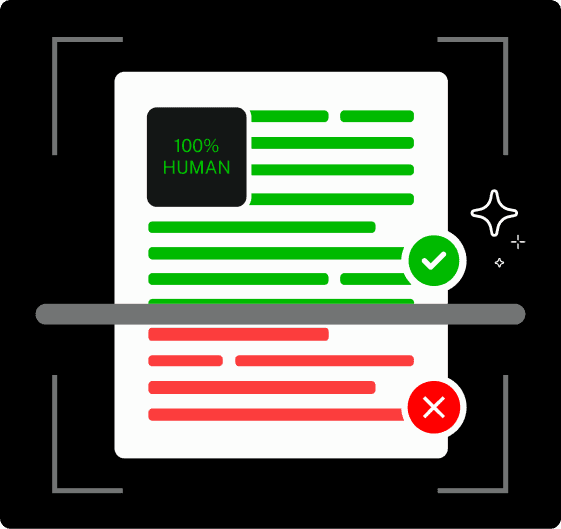
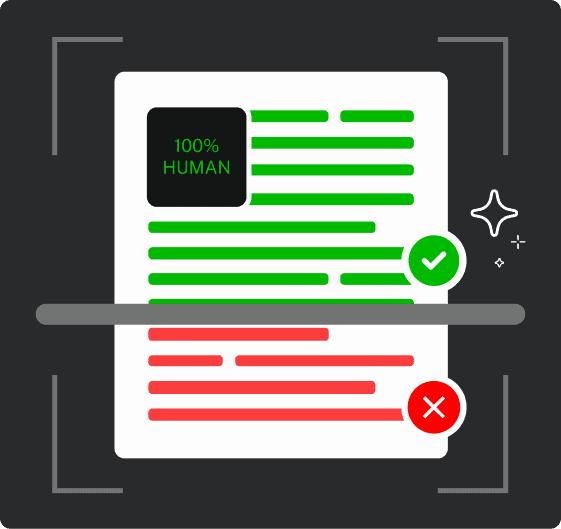
Never Worry About AI Detecting Your Texts Again. Undetectable AI Can Help You:
- Make your AI assisted writing appear human-like.
- Bypass all major AI detection tools with just one click.
- Use AI safely and confidently in school and work.
Definition of Plagiarism
Plagiarism is the act of taking the words, ideas, or even direct concepts of another author and trying to pass them off as your own original work.
In most cases, plagiarism is unauthorized, meaning the author of the original works was not consulted with, didn’t agree to, or is unaware that the act has taken place.
Plagiarism is considered (for the most part) an ‘ethical’ offense in that there aren’t any legal implications for engaging in it.
However, if plagiarism of intellectual property occurs, it can be considered a copyright or trademark violation.
Plagiarism can occur in any written medium but is prolific in academic and creative fields.
Effective plagiarism undermines the trust and respect between writers and their audiences, and can take on many forms, the most common of which include:
Complete Plagiarism
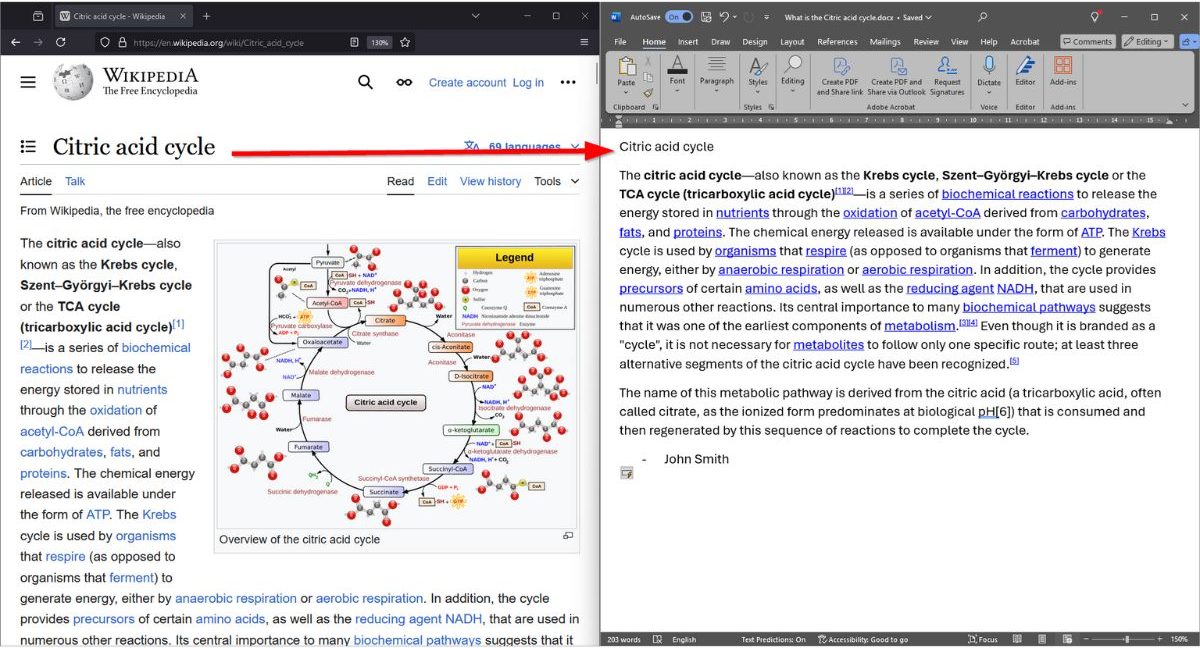
This is the most severe type of plagiarism – an individual submits an entire paper, article, or project that was completely and entirely written by someone else and then claims it as their own.
An example of this would be a student who is required to turn in a paper about a subject.
The student uses the internet to find an article already written on the same subject and submits that article under their own name, with no changes.
Direct Plagiarism
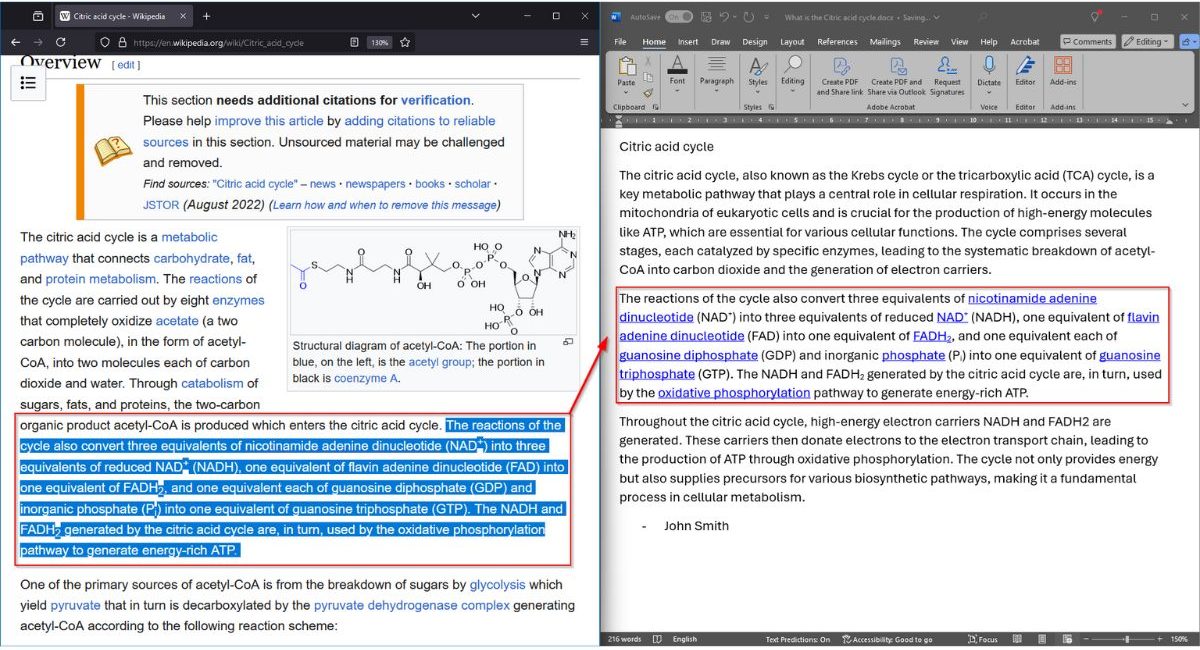
Rather than the entire written work copied in full, direct plagiarism occurs when only a portion of text is copied, and no citation, quotation, or proper attribution is made.
Generally, when direct plagiarism is committed, the author copies a few sentences or even an entire block of text and then attempts to pass it off as their own in full.
An example of this would be copying a large block of text from an academic journal and then blending it with the writer’s own words without changing the copied text.
Mosaic Plagiarism
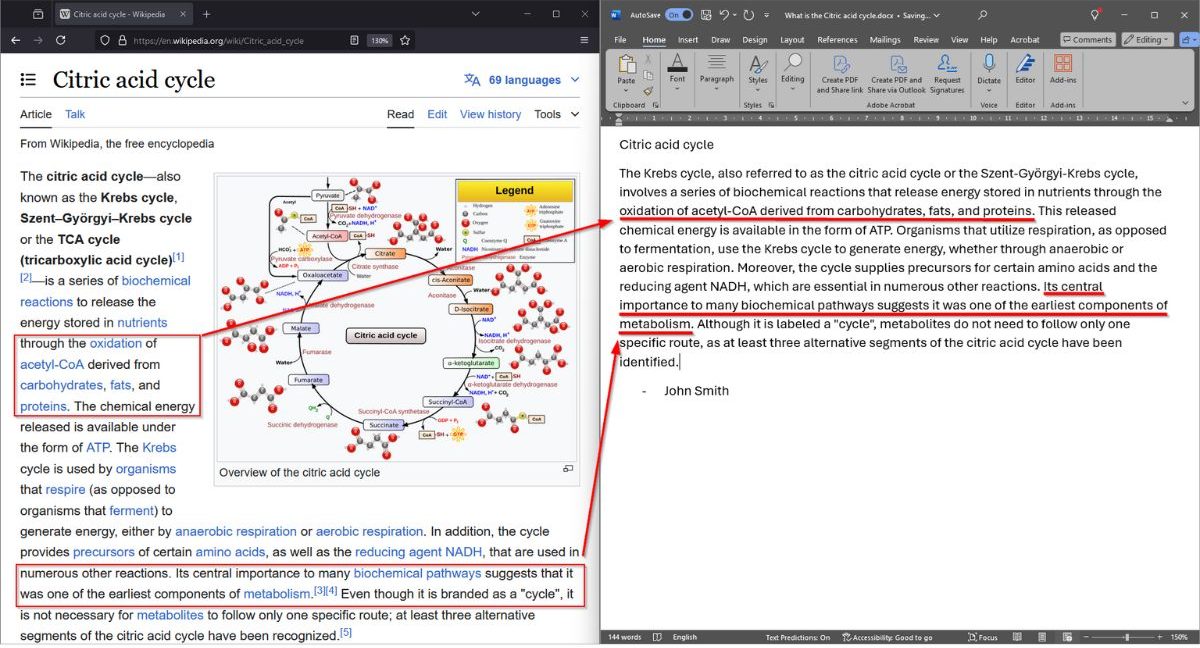
Also known as ‘patchwriting’ and ‘smart plagiarism,’ mosaic plagiarism involves the copying of small phrases, ideas, or excerpts of sections and then interspersing these into your own work.
This can be done from a single source, but it’s more common to use multiple sources.
Mosaic plagiarism is difficult to detect without using a dedicated platform; in some cases, it’s nearly impossible.
An example of this would be a student who finds three separate articles online regarding a single topic, then copies portions of them into their own work and fails to properly quote them.
Accidental Plagiarism
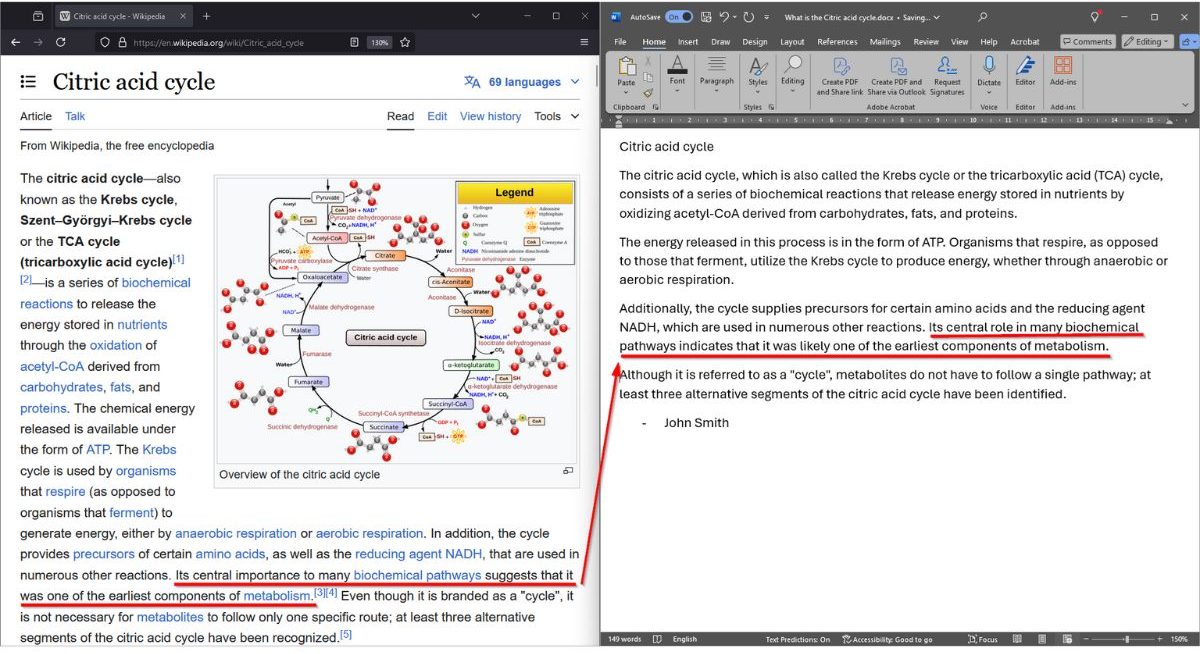
This type of plagiarism can happen for two reasons: the author forgetting to properly quote or cite their sources or inadvertently writing something similar to an existing article.
Accidental plagiarism of the second type mainly occurs when writing about scientific and medical topics as the tone of voice can be quite similar across the field or because terminology, laws, and chemical names are the same regardless of the author.
An example of accidental plagiarism could be a student writing about well-established laws in physics; for instance, the third law of thermodynamics:
“The entropy of a closed system at thermodynamic equilibrium approaches a constant value when its temperature approaches absolute zero.”
The wording of this law generally remains the same across scientific literature, so it may be picked up as plagiarism by online detectors.
Definition of Paraphrasing
The process of taking original text from one source and then restating it in another way but still conveying the same idea or concept is paraphrasing.
Paraphrasing can be as simple as swapping out a few words with synonyms or be as complex as a complete rewrite of the content in one’s own words.
To be considered paraphrasing, the author generally must have a good grasp of the subject itself and be able to convey the original concept accurately.
Any paraphrasing should be accompanied by a citation or attribution.
Failure to correctly credit the original author for the work is termed “paraphrasing plagiarism.”
In the table below, an example of correct paraphrasing is shown, with the source attribution:
Key Characteristics of Paraphrasing
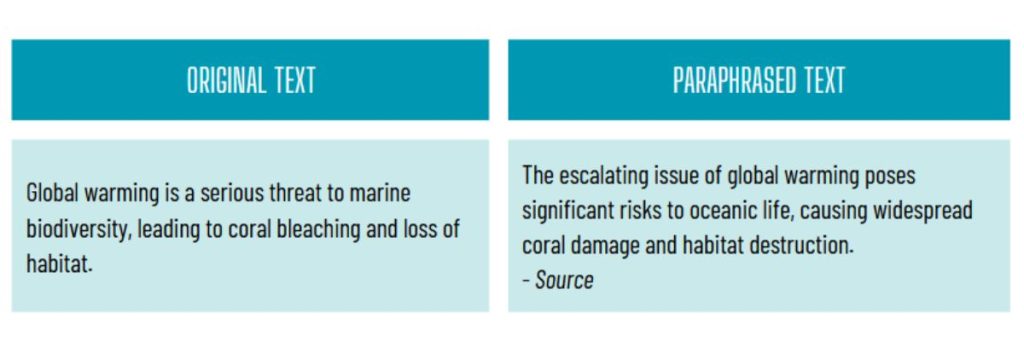
Originality in Expression
Even though the words have been changed or rewritten, the newly paraphrased text should still contain the original information, ideas, and concepts of the source text.
For example, this paraphrased text mirrors the sentiments and concepts of the original source text:
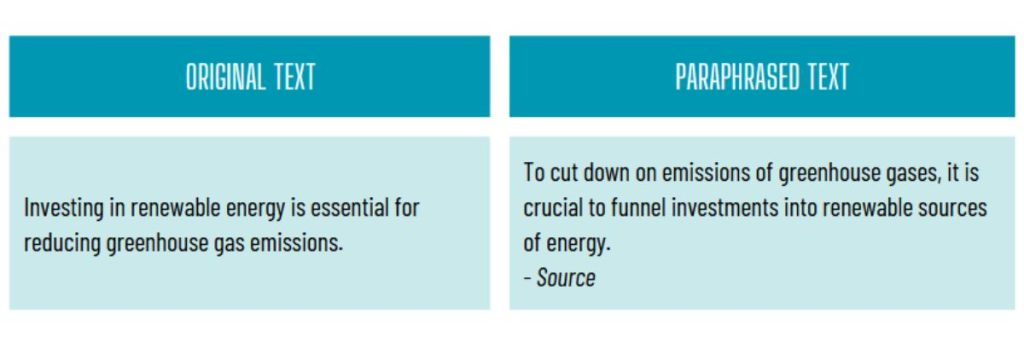
Accuracy
Factual and thematic elements of the source should be present in the paraphrased text. If the intent and concepts are distorted or lost, then the paraphrasing is of low accuracy.
For example, this paraphrased text has lost its original meaning due to poor paraphrasing:
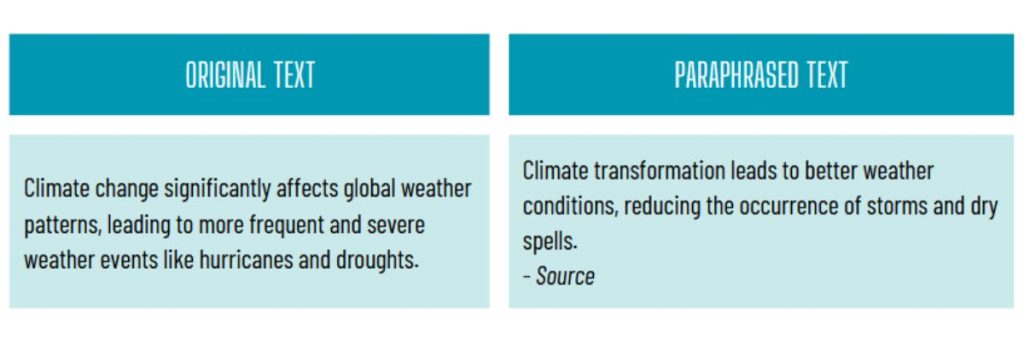
Citation
Just because the words are different doesn’t mean the original ideas and concepts no longer belong to the original author.
To avoid paraphrasing plagiarism it is still necessary to attribute the ideas to the original source.
This way you are ensuring and respecting the intellectual rights and academic integrity of the original author.
For example, this paraphrased quote has the MLA (Modern Language Association) style citation of both the author and the journal article it originated from:
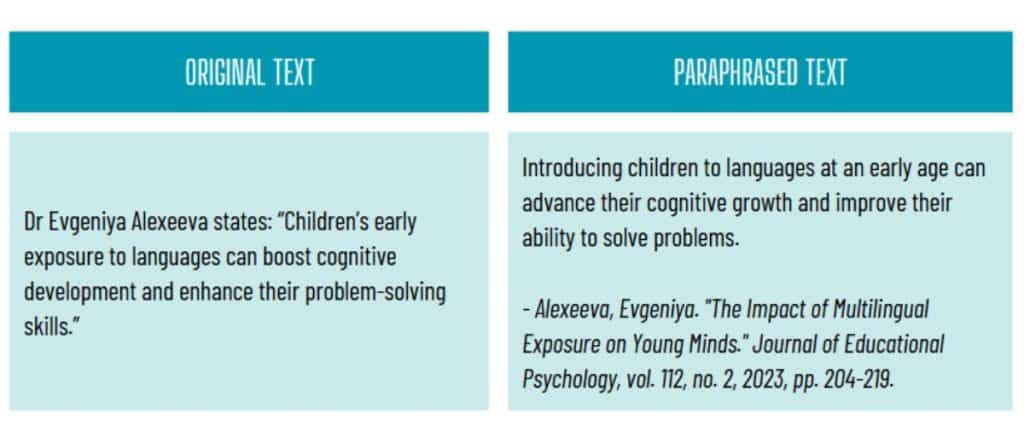
How to Prevent Plagiarism? The Best Ways and Resources
Whether it’s from accidental plagiarism or from a lazy student, it’s important that plagiarism is removed as much as possible from academic, creative, and professional writing.
A few folks reading this might remember the days when so long as your professor didn’t have a photographic memory, the likelihood of getting caught plagiarizing was quite low.
Nowadays, with so much of the world’s content digitized, plagiarism can be caught far more easily.
There is a wide variety of tools and resources available to help writers adhere to the standards of integrity and ethics in their work.
Citation Managers
In the past, the task of writing and formulating your bibliography was arduous at best.
Keeping track of which quotes come from which journal and by which author can be a nightmare, but with citation managers, the process becomes much easier.
Citation managers ensure all references are recorded accurately and, best of all, are consistent with whichever reference syntax you are required to use.
Popular citation managers include:
Zotero
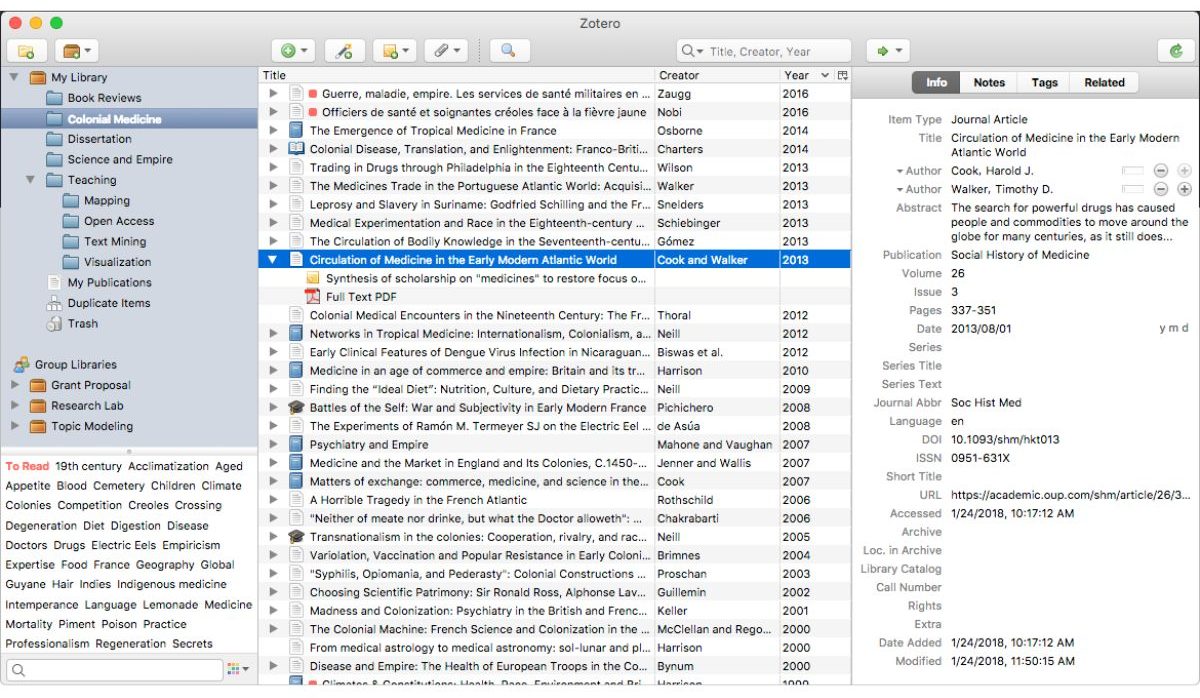
Zotero is a free option for anyone needing to amass and organize their research sources.
Its extremely intuitive layout is accessible from a web browser thanks to handy extensions.
The platform also uses group libraries which enable you to work with teams or for teachers to work collaboratively with their students.
Endnote
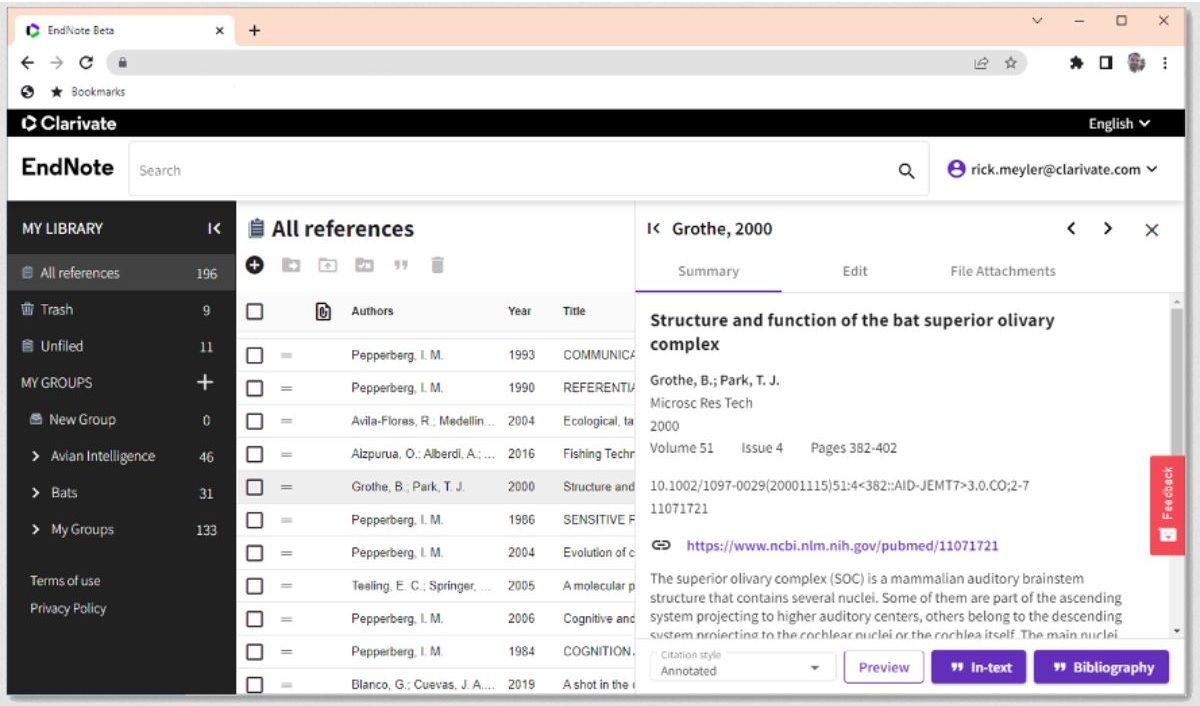
EndNote carries quite the reputation among scholars for good reasons.
It addresses all aspects of reference management while also paving the way for teamwork on documents without lag or duplication.
Mendeley
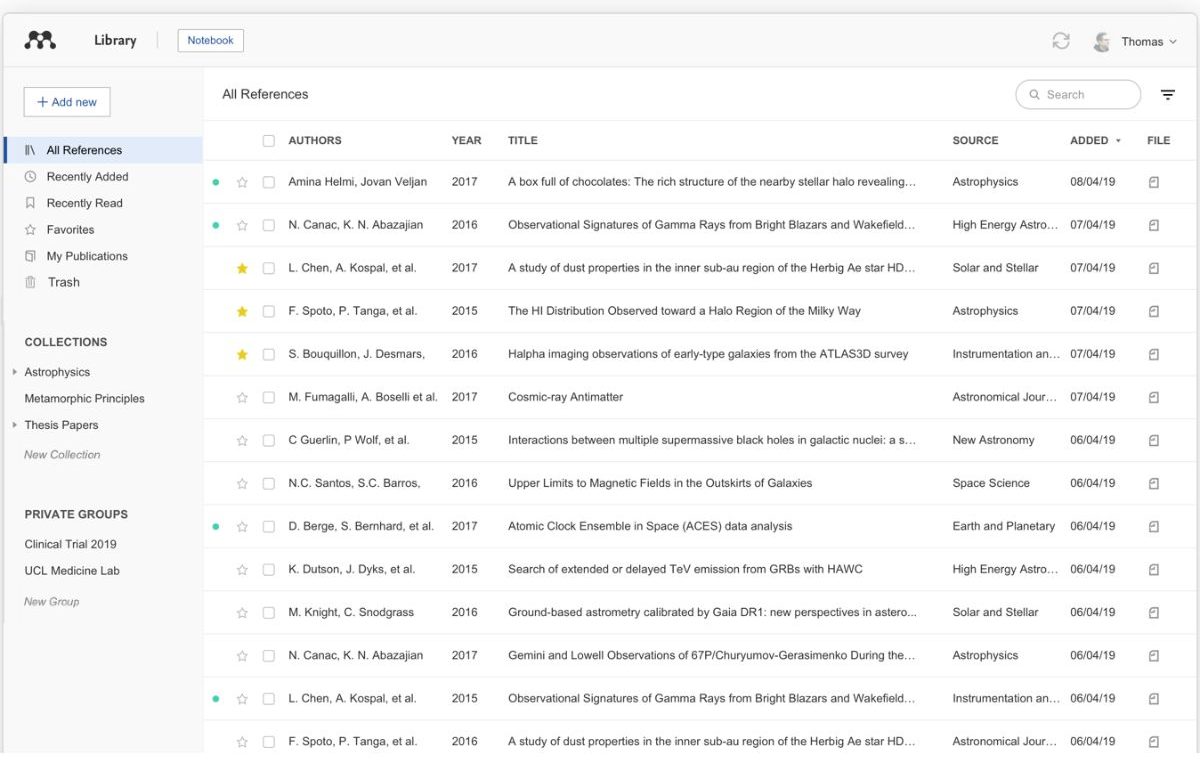
Mendeley is developed to support both document organization and collaborative study efforts which cater well to students and professionals alike.
Its desktop application offers simple tools for PDF annotations coupled with social networking elements designed to connect researchers across similar disciplines.
Plagiarism Checkers
Even the most diligent of us make the occasional mistake when it comes to written content. One way to absolutely ensure that your writing is 100% your own is to use a dedicated plagiarism checker.
These platforms can check your writing against a truly massive amount of digitized content in a matter of minutes. Here’s a free plagiarism checker that you can use to get you started:
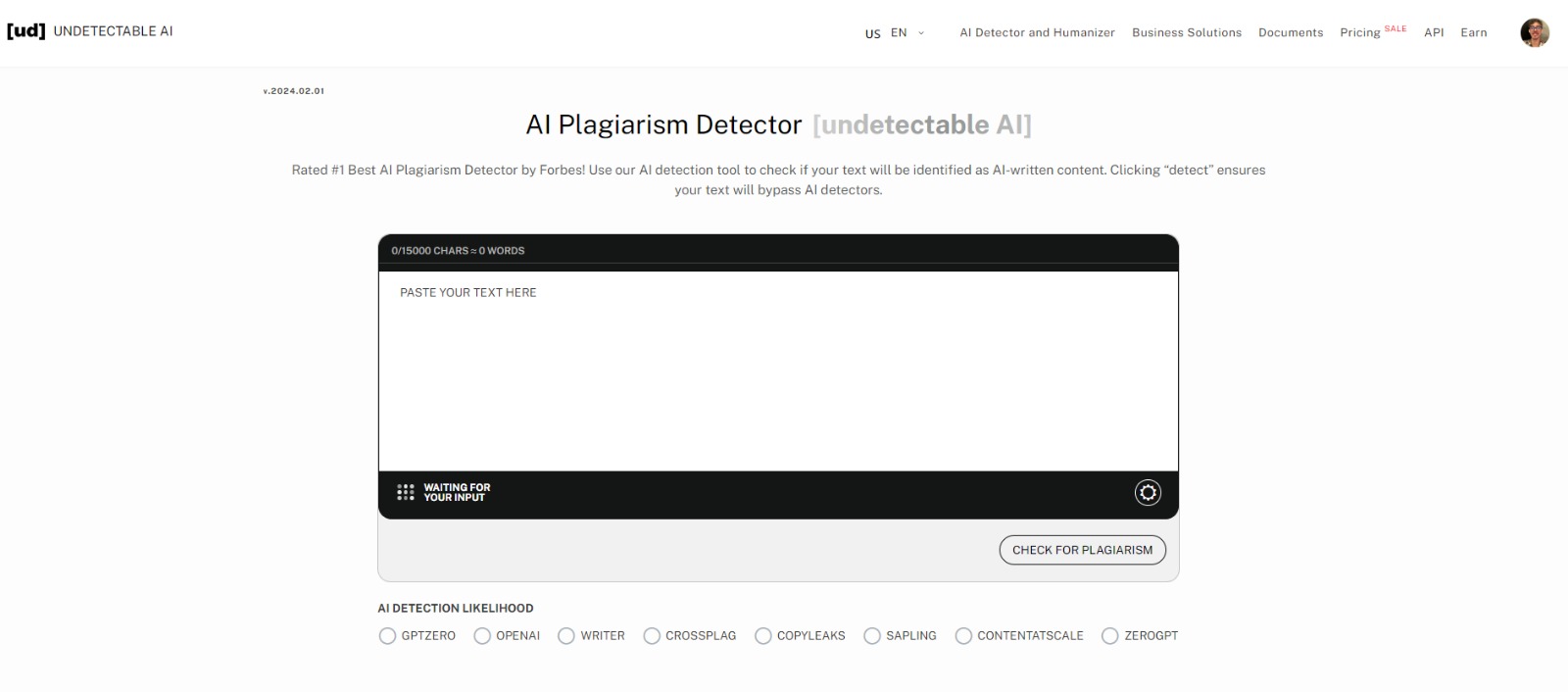
Undetectable AI: When using tools like ChatGPT, it is still possible to accidentally produce content that is considered plagiarized.
The Undectable.ai detection platform specializes in the detection of plagiarism even when the content is AI-generated.
When you need to be absolutely confident that your work is both unique and will satisfy AI detectors, Undetectable.ai is an ideal solution.
Writing Tools
Beyond the detection of plagiarism, there are a myriad of writing tools designed to assist you in the writing and creating process.
Gone are the days of endlessly clicking on the squiggly red and blue lines in word processors; many tools actually detect writing issues and make suggestions in real time.
Tools such as the Hemingway editor help writers refine and simplify their content to improve readability.
If you prefer to use word processors like Google Docs and Microsoft Word, ProWritingAid has integrations that allow you to replace entire segments of text with suggestions as you type.
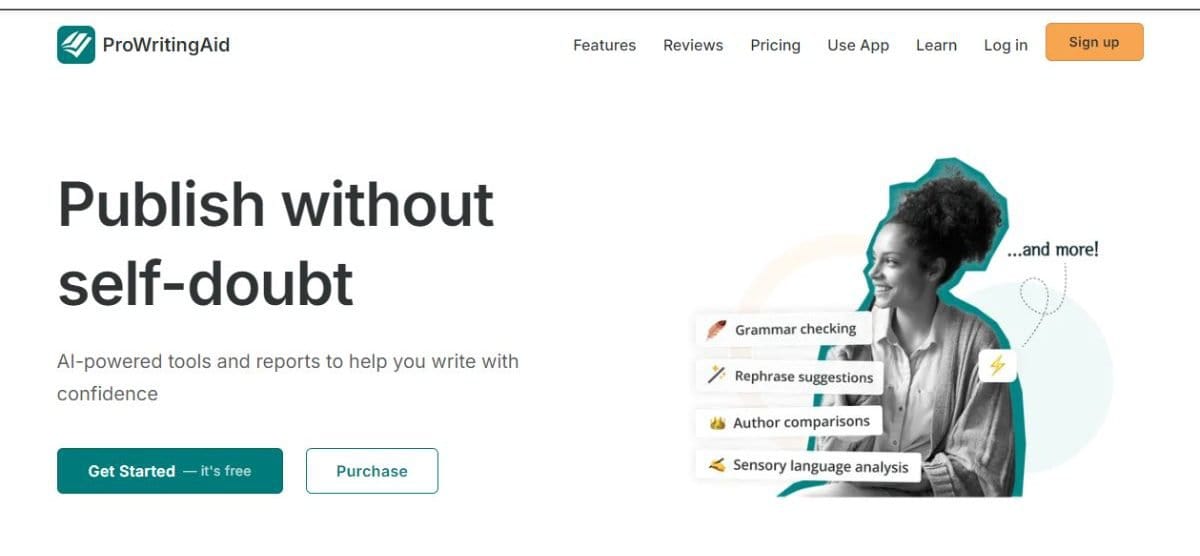
AI has also changed the game when it comes to writing, but it has become somewhat of a double-edged sword.
Many schools and freelance clients now demand proof that your content has not been produced by AI.
As anyone who has been requested to use these AI detectors knows, they don’t always get it right, leading to immense frustration and sometimes hours spent refining their own words.
Often this can only be a few sentences, or even because the writer isn’t a native speaker of English. Talk about frustrating.
Tools like Undetectable AI carefully process your work and humanize the content to satisfy these detectors in seconds, saving freelancers, students, and article writers countless hours of unpaid time.
Another powerful option worth exploring is our Undetectable AI’s Human Auto Typer.
This tool simulates natural typing behavior by automatically typing out your content in real time, exactly how a human would.
It’s perfect for writers, students, or freelancers who need to re-enter or upload text manually without triggering AI detection systems or copy-paste flags.
Instead of pasting paragraphs that might raise red flags, the Human Auto Typer smoothly inputs them word by word, maintaining your flow while preserving authenticity.
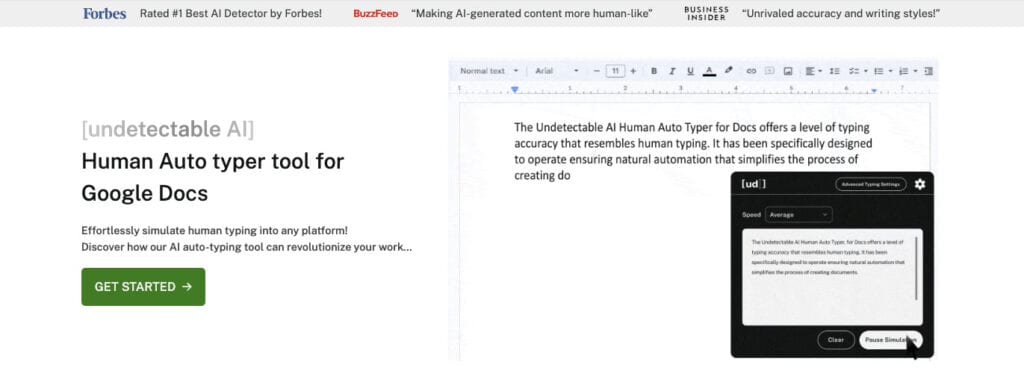
It’s a small but incredibly smart solution that helps you focus on writing without worrying about formatting or retyping fatigue.
It’s a simple example of how Undetectable AI builds tools that make writing feel more human, not harder.
Don’t forget to also check out our AI Detector and Humanizer in the widget below
FAQ
Does Paraphrasing Count as Plagiarism?
Absolutely paraphrasing can count as plagiarism, in fact, there is a special term known as ‘paraphrasing plagiarism’ that describes exactly this act.
Simply changing a handful of words does not suffice, as the idea and concept still belong to another writer.
To avoid any paraphrased work to be considered as plagiarized, you should always cite the original source.
If You Paraphrase and Cite, is it Plagiarism?
No, paraphrasing with proper citation and attribution means you are acknowledging the work isn’t yours and are demonstrating respect for the intellectual property of the original author.
Is it Considered Cheating to Use a Paraphrasing Tool?
It’s not considered cheating to use a paraphrasing tool, however, you should remember that paraphrasing tools don’t have specific knowledge of the subject or its concepts.
If you do use a tool and don’t have a firm grasp on the subject matter the chances of creating an inaccurate paraphrasing increase dramatically.
You should also provide proper citations and references to any work you have paraphrased in order for it not to be considered plagiarism.
Conclusion
Having a good understanding of the nuances between plagiarism and paraphrasing is not only essential for the maintenance of integrity in writing, but it’s also important for fostering a culture of respect and creativity in all professional fields.
You never know – one day, it might be your hard work that someone has plagiarized.
This is why it’s so important that we as writers continue to enrich the professional landscape rather than diminish it by plagiarizing others’ work.
So remember to provide citations and use tools like Undetectable AI responsibly.
